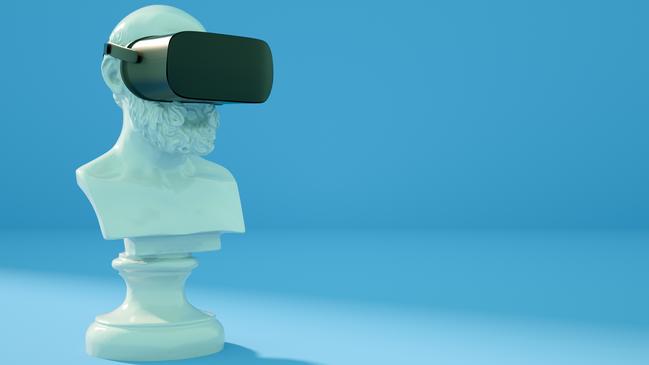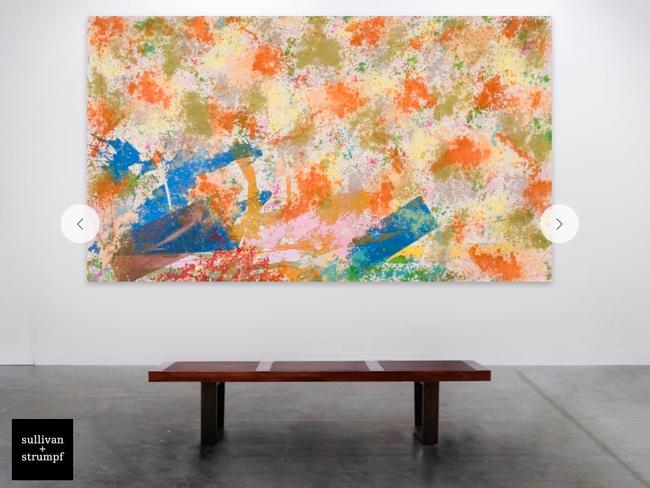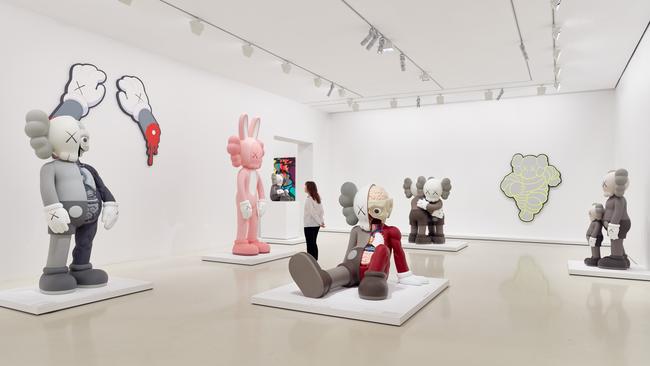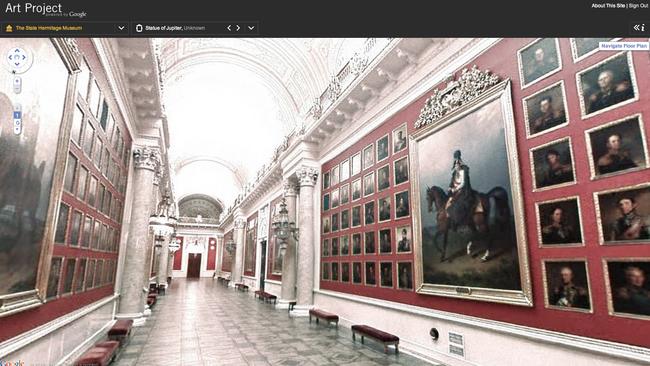COVID-19 lockdowns: exhibitions go online
There was a time when an art lover needed to travel abroad to peek inside Milan’s Galleria d’Arts Moderna or New York’s Museum of Modern Art or the Rijksmuseum. Not anymore.

Art galleries can be intimidating places. It’s not deliberate, at least most of the time: curators and other gallery staff work hard to present inclusive, welcoming environments, hoping to appeal to as many visitors as possible. But for the uninitiated, a few hours inside the world’s great cathedrals of culture, from the Uffizi to the Hermitage or the Met, can be a dizzying experience.
Those are just the public institutions. Step inside a commercial gallery — especially the giants, like Gagosian — and nervous buyers might feel like they’re in Pretty Woman, the scene where Julia Roberts is turned away from a fancy clothing store for not looking the part. The sensation is even greater at art fairs, those carnivals of culture and commerce where one way to fit in is to arrive in a private jet.
What has changed in the coronavirus era? No piece of cultural infrastructure has been untouched by the crisis, and the visual arts world is scrambling to adjust along with everyone else. But in recent weeks, as galleries recalibrate the way they present art, a new sense of democratisation is being introduced into the creative experience as the nature of the storytelling evolves.
The level of sophistication varies, as does the depth of material, but institutions are looking for innovative ways to engage with audiences at this strange, unsettling time. Opening hours are not what they once were: the Tate closed its doors, then filmed an hour-long performance by Congolese choreographer Faustin Linyekula, which ended up online.
Similar innovations are taking place in the commercial sector, where auctions, private galleries and art fairs are shifting perspectives too. Relationships are changing between artists and audiences, galleries and clients.

Consider Art Basel. First staged in 1970, the art fair now takes place in Switzerland, Miami and Hong Kong, where collectors come to browse some of the world’s top galleries under the one roof. Early last month, coronavirus forced the cancellation of Art Basel Hong Kong, scheduled to open on March 19, and galleries were refunded three-quarters of their entrance fee.
Then came the virtual replacement. Art Basel Hong Kong launched a series of online viewing rooms featuring 235 galleries from 31 countries. As always, organisers talked up the prestige, saying the overall value of work exceeded $US270m ($455m). This new environment suited the major players, such as Gagosian and David Zwirner, who have invested heavily in digital resources in recent years. But it also gave others the chance to observe an online marketplace at this scale.
Art Basel’s online viewing rooms were easy enough to navigate. Upon entering one room, the gallery presents an overview of the work they have brought to the fair — the kind of narrative you might find on a leaflet in the physical space. One click later and you’re inside. Some of the works are displayed above a virtual bench while others appear against neutral backgrounds. All the relevant details are listed prominently alongside the image: name, dimensions and a short blurb. There is also, believe it or not, a price tag — and this is where the online experience stands apart. Transparency like this is not always present in the physical space.
RELATED STORIES: Know My Name: Historical imbalance will finally be corrected | Australian plays go online in free stay-at-home festival
Some 90 per cent of the participants from the original fair agreed to take part in Art Basel’s online edition, including the Australian gallery Sullivan + Strumpf. The savings are obvious: no need to fly to Hong Kong, for instance. But, while sales haven’t been as strong as might have been expected in the physical fair — economic uncertainty probably hasn’t helped either — co-owner Ursula Sullivan has been watching with interest as these experiments unfold.
“Missing out on Art Basel, and now Melbourne Art Fair too, and also not having the traditional opening drinks anymore, has really encouraged us to look at what we’re doing online,” she says.
“We were already on the path of this anyway, but now we’re speeding it up. It does seem to be an obvious choice — if people are sitting at home on their computers, it’s a good opportunity to research many things, including art you might like to own.
“But it will be a very competitive arena, and aspects of producing content can be expensive, so we’re looking at as many options as possible.”
As businesses shut across Australia, commercial galleries are moving to appointment-only models along with various levels of online engagement. Where possible, curious buyers are encouraged to wander through virtual spaces that remain open for business. “Be assured that we are here,” says Melbourne’s Tolarno Galleries, “just a click away.”
Auction houses are monitoring the situation closely too. Earlier this month, Deutscher and Hackett conducted an indigenous art sale that took place just a few hours after the government banned indoor gatherings of more than 100 people. Telephone bidding increased by 50 per cent as a result.
Meanwhile, D+H is continuing with lower value auctions online while postponing a larger sale from May to June. “This auction has largely been consigned,” says executive director Chris Deutscher, “so we are now sitting and waiting until the world is calmer.”
The past fortnight has seen all the nation’s public galleries shut their doors, sending visitors online in the process. The offerings vary from gallery to gallery, but the material available on websites and social media platforms includes essays, videos, talks, podcasts and, of course, images.

These moves are well under way in Victoria, where major institutions shut down a week ahead of their interstate counterparts. The National Gallery of Victoria is presenting virtual tours of exhibitions, similar to Google Street View but inside the gallery walls. First off was Collecting Comme, focusing on the work of fashion designer Rei Kawakubo. Next is a virtual tour of Kaws, which goes live on March 28, followed by Keith Haring and Jean-Michel Basquiat on April 4. Various other projects are under way, including audio recordings from writers and multimedia discussions of recent acquisitions, formal and informal material to be unveiled gradually over time.
The NGV has more of its collection online than the majority of other public institutions. The digitisation project was an early priority for director Tony Ellwood, who says only 15 per cent of the collection was online when he was appointed eight years ago. That number is now at 90 per cent, and Ellwood expects to reach 100 per cent this year.
He says researchers and educators worldwide are turning increasingly to collections that can be accessed online. “What I’ve been focusing on in this last week is the permanent collection stories,” he says. “They’re timeless and I can roll them out without knowing the period of time we’re going to be down for.”
In Canberra, about 60 per cent of the National Gallery of Australia’s collection is available online. Among other initiatives, the gallery is developing online tours of exhibitions, including the recent exhibition devoted to Matisse and Picasso, plus highlights from curators.
Says director Nick Mitzevich: “In the 21st century, we can’t just be a gallery in Canberra, we need to be a gallery for the nation and beyond.”
The Art Gallery of NSW is also presenting “filmed experiences” of its latest shows. This includes part of the Sydney Biennale, which had been due to run until June 8. That event is now being reimagined as an online-only experience, with virtual walk-throughs, curated tours, podcasts and more being assembled with the help of Google, a Biennale partner. Further details are expected next week.

Google Arts and Culture has of course been working in this space for a while. There was a time, not so long ago, that an art lover needed to travel abroad to peek inside Milan’s Galleria d’Arts Moderna or New York’s Museum of Modern Art or the Rijksmuseum.
Now you can do all that from your living room, leaning closer to the image than any security guards would allow in person. Social distancing or not, it’s one way to avoid those infernal crowds around Starry Night.
Christopher Allen and Public Works will return next week.
-
SALEROOM
Japanese artist Maio Motoko, who was born in 1948 and trained as a traditional screen artist, is known for her contemporary reinterpretations of the form. Her works are in international collections such as the Metropolitan Museum of Art in New York and the National Gallery of Victoria in Melbourne.
At a recent auction in Sydney by Shapiro Auctioneers Australia, one of her eight-fold screens, consisting of antique fabric, Japanese paper (washi), ink, crushed-shell pigment (gofun) and silver foil, was the top sale. The work, Whirlpool Uzu (c. 2012), had a pre-sale estimate of $10,000 to $15,000 but sold well above that for $67,200 (including buyer’s premium). The second highest sale was an Attic red-figure hydria. This three-handled water jar, from about 300BC to 500BC and decorated with female figures, had a pre-sale estimate of $5000 to $7000. It fetched $33,600.
Managing director Andrew Shapiro says the Japanese screens were a “very exciting highlight of the auction”. “They are contemporary works of art and sought after by national and international collectors. The classic Greek vases from the estate of entrepreneur David Ross were again chased by international buyers. It is very rare to see examples of this pottery in Australia with perfect provenance from the leading antiquities gallery in Zurich.”
Bronwyn Watson

To join the conversation, please log in. Don't have an account? Register
Join the conversation, you are commenting as Logout